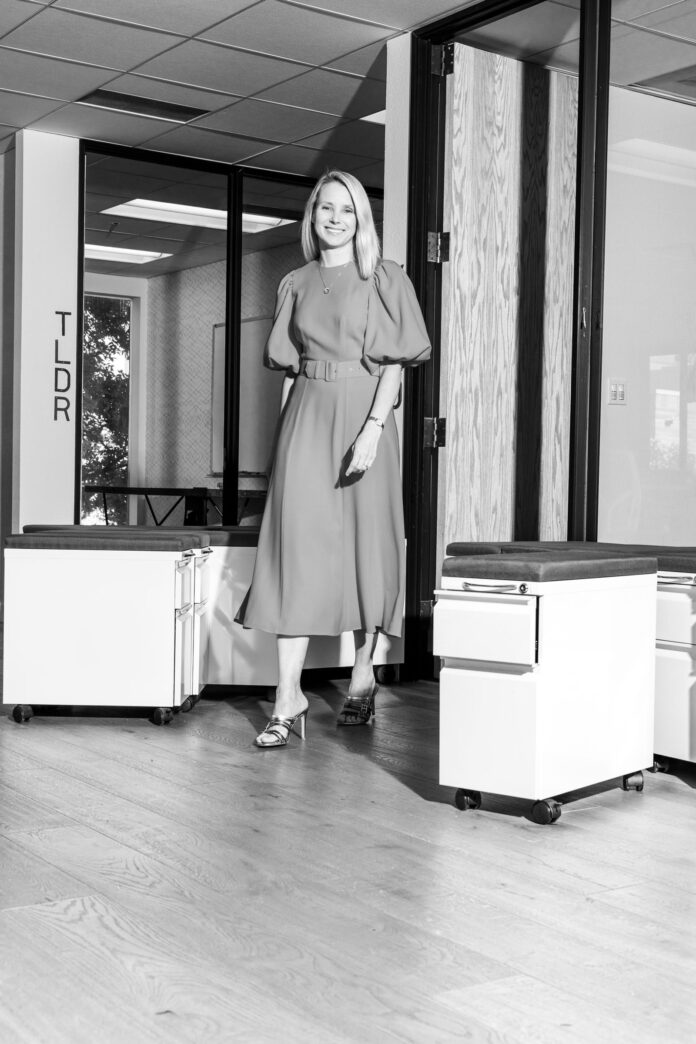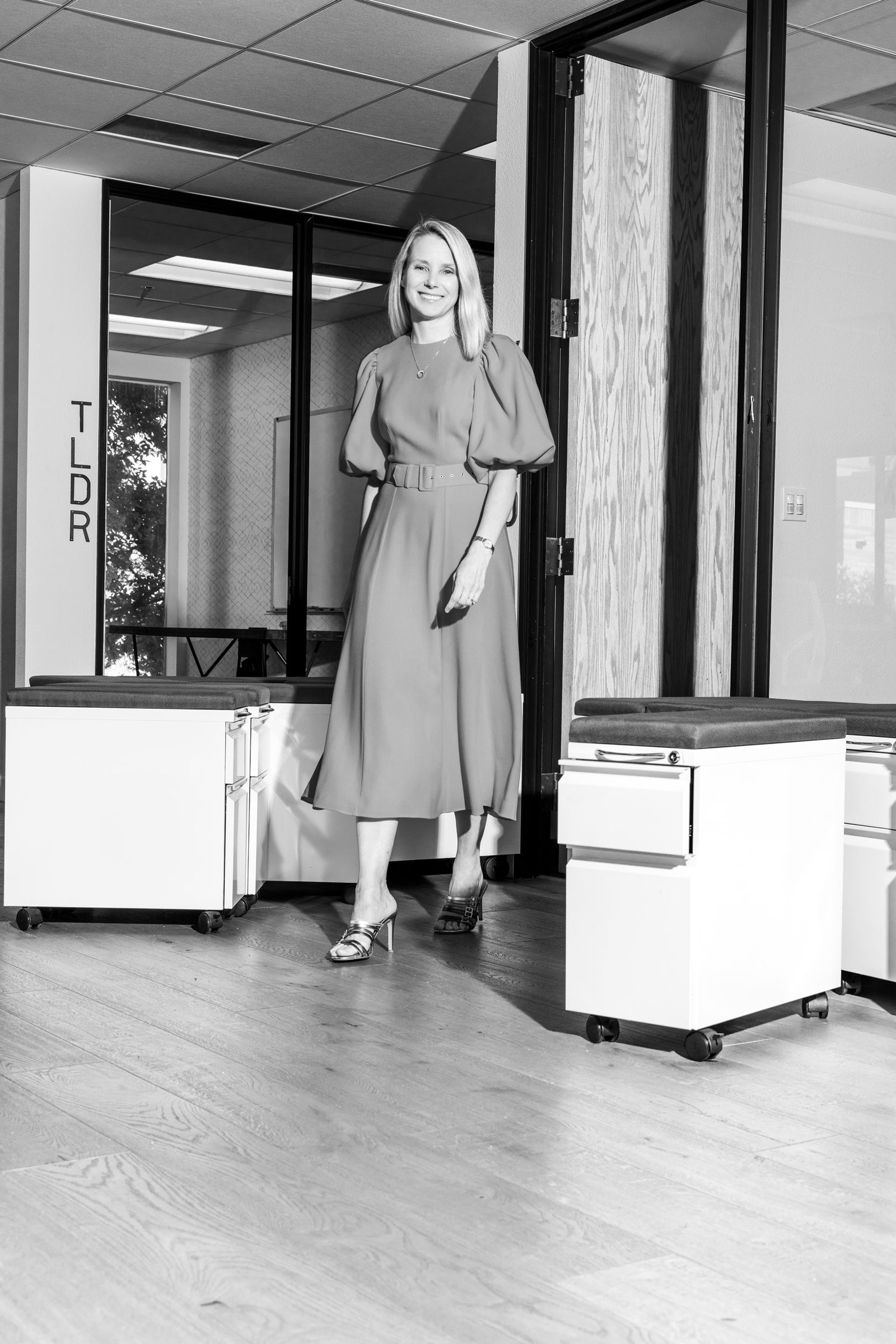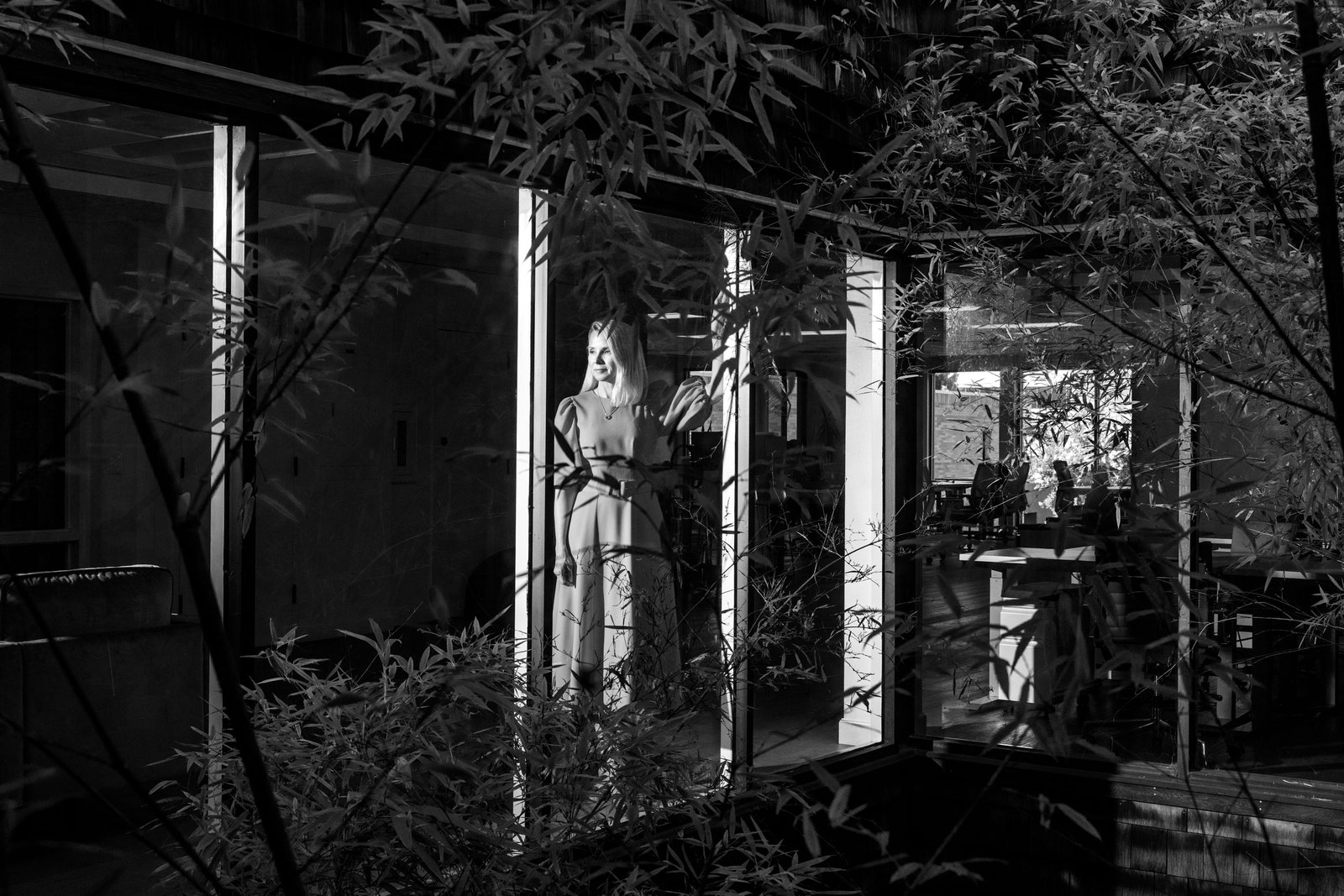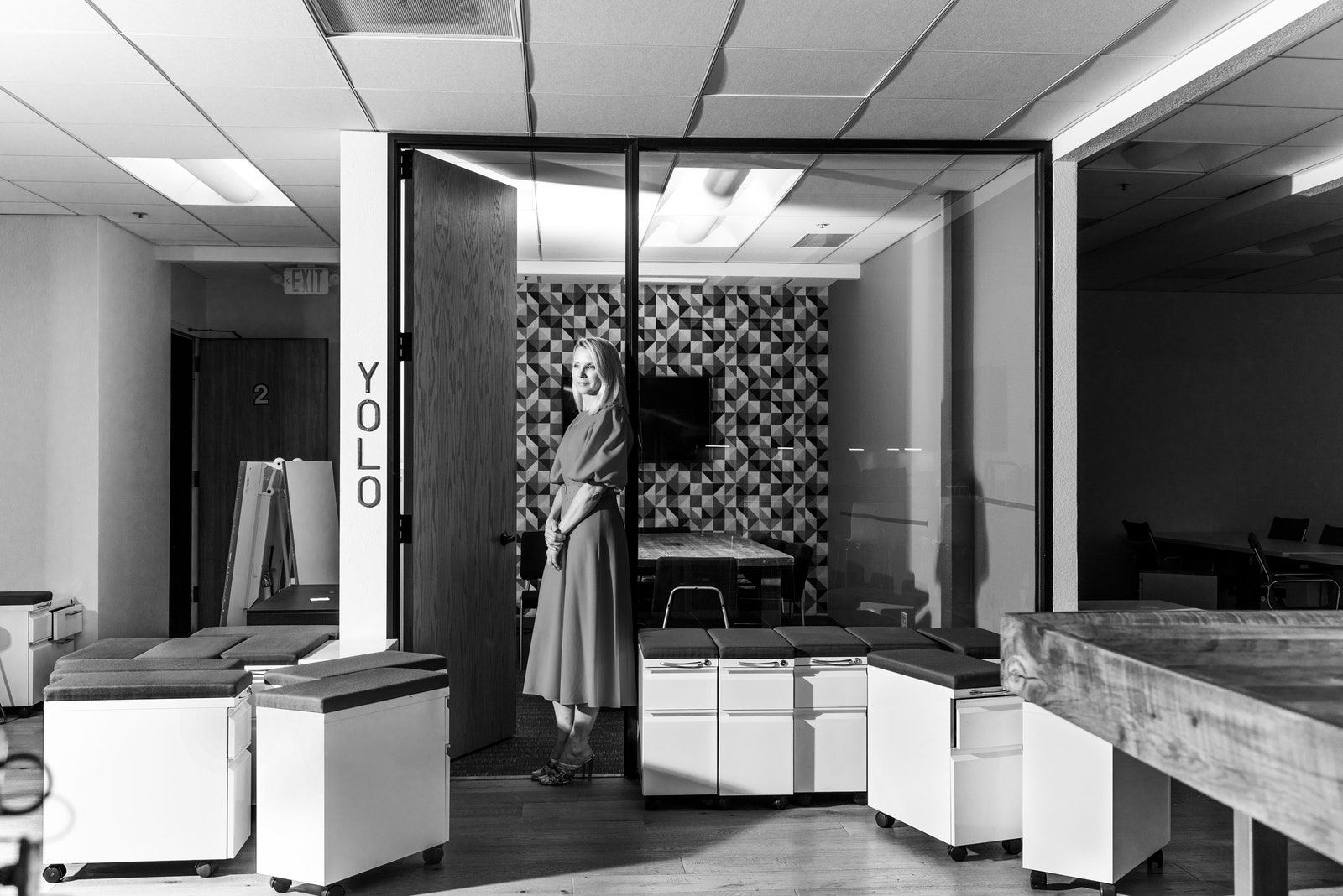Marissa Mayer didn’t say AI is Death, destroyer of worlds or even AI needs ethical guardrails.
Instead, she said it’s the sun—life-giving, bright, shiny, endlessly giving. Thus, the former Google engineer and CEO of Yahoo, who has worked on artificial intelligence for 25 years, christened her startup Sunshine. It’s devoted to AI-empowering family and social life with photo sharing, contact managing, and event planning.
As I spoke with Mayer in Sunshine’s candy-colored digs in Palo Alto, I was so stunned by her boosterism that I ended up mirroring it. “By gum, you’re right!” I said, all but slapping my knee. Intelligent machines are our bosom buddies. Anthropic’s Claude had that very morning given me canny insight into a personal matter.
What delighted me less about Mayer (pronounced MYE-er), as an alpha female in Silicon Valley, was her disdain for feminism. She first voiced it in 2013, to widespread criticism from the liberal sisterhood that likes to have the alpha females of Silicon Valley with us in solidarity. If I’d expected her to back off this position, I was wrong. She dug in. “I started learning about feminism as a teenager,” Mayer told me. “It was something more militant, more hardened, less based on merit. It didn’t resonate with me.” Then she used the word “shrill.”
Oh boy. Had Mayer, after leaving Yahoo in 2017, decided to “prioritize family” and become a full-on tradwife influencer—or joined JD Vance’s crusade against child-free cat ladies? Only as she went on did I understand. Her bafflement by feminism, and gender more generally, began to add up. As a computer scientist at Stanford and the 20th hire at Google, a quarter century ago, she’s above all a geek. For Mayer, geekery supersedes gender.
It must be said that Mayer is lovely. Even on a Wednesday at the office, she dresses as if for a Southern bridal party. The topics of fashion, art, design, film, color, prime numbers, and photography supercharge her. And she’s galvanic when she talks consumer tech.
Sunshine’s signature app, Shine, launched in March. With features that let people collectively plan events and upload photos to a shared album, the app was dismissed by snarky critics as old hat. Others praised it as “throwback tech,” useful to the fast-growing market of older adults. (Mayer is 49, and I’m older than that.) Listening to Mayer, I tried and tried and tried to remain skeptical while faced with her glee. I failed.
VIRGINIA HEFFERNAN: Tell me about the name Sunshine.
MARISSA MAYER: When I was at Stanford, I named my hard drive Moonlight because I was such a night owl. When I got to Google, they’d had a naming rubric for computers, but I was the first engineer to pick a name myself. The office was really bright, so I said, “Sunshine.” Sunshine, moonlight, moonbeam. I love those words.
At some point, I bought Sunshine.com. Then, when we started this company, we knew that we wanted to do things that were upbeat and enlightening, things that involved AI. AI really does enlighten—and it’s potentially a renewable resource that can be very generative, just like sunshine is.
Your sustained pleasure in AI is unusual. But techno-optimism seems to be making a bit of a comeback—
That’s nice to hear.
—and you’re making me nostalgic for the enthusiasm of the internet’s earlier days. How do you stay so hopeful?
I’m generally an optimistic person. There are just so many great, smart, wonderful people in the world. I remember hearing a talk from the early days of eBay, the Wild West days in the mid-’90s, and people were saying that everyone on the internet’s a troll out to swindle you. Someone at eBay said, “There are. But it’s 1 percent.” The great insight from eBay is that you can actually handle the 1 percent manually.
Is it really only 1 percent?
I know it feels like more bad actors. But by and large, that observation that most people are acting with good intent is right. History has also made the point that technology very rarely sets us back. It’s almost always additive. I approach new things asking, What good could come of this?
So you don’t balk at the new—not the blockchain? Not Martian colonies?
Look, I don’t love operating from fear. Nobody does their best work when they’re afraid. History also backs that up.
When you were at the National Youth Science Camp as a teenager, you became fascinated by the mind of your mentor, Zoon Nguyen. You ended up caring less about what he knew and more about how he thought. Two parts to this question: What do you know, and how do you think?
What do I know? Well, we all know thousands of facts, right? I know consumer tech. I know a lot about different businesses. Randomly, I know a lot about movies.
OK, so how do you think?
Here’s an example from 2002, when I was running product at Google News. My friend Krishna built this script that crawled 15 sources and clustered stories by topic, using k-means clustering, which is an AI technique. We hired five news “sourcers” to find a comprehensive set of news sources from around the internet. There’s the obvious ones, but there’s others, like Layla’s Knitting News.
We started talking to some of the big sources, saying, “Look, we have this little tool. We don’t know if it’s going to become a thing.” The Times, Reuters, The Washington Post were hemming and hawing about whether to be in. They finally consented. I had decided once we had two or three, we’d just go.
So we just went ahead and crawled 4,000 sources and launched with all of them. We were prepared for a bunch of people asking to be taken out. But the opposite happened. By noon, we had 1,500 more sources, sources we hadn’t found, that now wanted in.
Right after that, we hired an attorney who had worked in news licensing. We ended up in a who’s-on-first conversation. He said, “How did you get 4,000 publishers signed up? All the demands from all those different companies must have been insane.” I was like, “We just put them in and let them opt out.” He was like, “No, no, no. I need to have the terms.” He thought we had negotiated 4,000 contracts. He’s like, “How many did you reach out to?” I was like, “Three.” He said, “No, no, no. You don’t understand what I’m asking.” I said, “I’m not sure I do know what you’re asking.”
You really didn’t get it.
I’m 26, 27 years old—and I’d never worked in news. I didn’t know anything. But that naivete was better than knowledge. The experience of that attorney would’ve gotten in the way of doing something like Google News. Inexperience can create innovation.
Decisionmaking is a mental process you take seriously. And you seem to embrace something most of us hate: being overwhelmed.
That’s true. It’s important to overwhelm yourself with options. You roll around in a lot of different choices, and get to know what you value and what you don’t—that overall prioritization. Yes, you’re going off your gut, but you first consider enough possibilities that the decision is well-informed.
All this immersive, nonlinear rolling sounds kind of … unscientific.
Yes. Much of it is visual. The internship that led me to Google was at the Union Bank of Switzerland. I was working with a gentleman on basic data visualization. He would load up vectors with lots of different facets and make a spring model between them. We did the cost of living in different cities: load up the price of milk, the price of gas, the price of housing for London. Then you do it for Houston, San Francisco, and each of those vectors—obviously a line and time and space—pulls in a different direction. You can actually wire them all together as if they had springs connecting them all. It’s like, they’re all pulling, and then we would apply a gravitational force to settle them onto a plane. You could actually see that, at that time, Tokyo was the most expensive city in the world. It pulled much further away from the other cities.
We were asking: How do you visualize markets or a complex vector space where there’s more values in the vector than you can actually model in your head? An interesting way of taking really diverse datasets and making them scatter plots.
Got it. Kind of. And the spring is—an actual spring, like on a mouse trap?
Yeah, there’s a spring on this three-dimensional model. You could actually see the cloud of points slowly settling onto the grid.
[Pretending to understand.] Speaking of springs, have you ever tried making hardware?
I’ve always been a software girl. But, once, at a U2 concert I saw a light display with three-color LEDs. I wondered if I could make a piece of art inspired by it. I found this guy who makes ping-pong-ball-sized three-color LEDs in his garage, and I asked if they were addressable like basic Christmas lights, but with diffusers. He said, “I could teach you, but it’s a pain to make them.” He did teach me how to wire drivers, but I never had to wire them up, which is good because, in the end, I did a 24-by-24 grid on my wall, and that’s 576 little LEDs with ping-pong-ball necks. Three cards—light one, light two, light three, and the RGB value of each—drive the whole thing, and that set of drivers plugs into an old ThinkPad. Now they can run little programs I wrote. We call it my Light Bright.
So I was at Yahoo News when you were CEO of the whole company. What attracted you to ailing Yahoo at that point?
A lot of things. I’d been working on Google Search—and then I went really deep into Google Maps and enjoyed forcing myself out of my comfort zone. It made me hungry for more learning. When someone pointed out that Yahoo was search, mail, news, maps, mobile, and some social—all these different components I’d done in my career, all these different problems I’d worked on—I thought, maybe I could take what I’ve learned and apply them effectively in this new context.
I’d also always had a sweet spot for Yahoo. I loved the brand when I was coming of age around 2000. It was the internet.
But it did kinda feel like a sinking ship, no?
Yes, the perception was that the company had had such a rough go for so long. The brain drain was real. But as an engineer I felt that if something worked once, you should be able to rebuild it, even in a different way. When I got there, I pulled together a group of old-timers who’d been there in the heydays and the tough times. It was a treasure trove of really talented people who helped define the internet in the early 2000s. I was surprised because they said, “None of your predecessors have come and sought us out.”
But the comeback we hoped for didn’t happen. You sold to Verizon. What went wrong?
What I learned—and it’s obvious in hindsight—is that timing is everything. Yes, taking all those Yahoo products and putting them on mobile was a good idea, but it needed to happen five to eight years earlier than it did. At the end, [Yahoo cofounder] Jerry Yang said, “The product line has never been in better shape. The products are gorgeous, they’re usable, they’re useful. You should be really proud.” That’s a compliment I hold dear. But it was just too late.
I was also told by another experienced CEO, “It will surprise you how few decisions you have to make and how perfectly you have to make them.” That was a big surprise to me. When you’ve got a great team, the number of decisions you can delegate and have made as well, if not better, than you would’ve made them is really high. But there are a few decisions, a few very small moments—if that decision had just been slightly different, it would’ve worked out quite differently.
In terms of the sale to Verizon, we had previously designed a tax-free spinoff of the Alibaba assets that would have allowed Yahoo to continue as an independent company. We felt really good about it. The activist investors didn’t feel as good. Now, hindsight being twenty-twenty, it’s clear it would’ve worked, and it would’ve been value-accretive to everyone. But the board made its decision, and it’s not helpful now to second-guess.
I have to admit it was somewhat difficult to do journalism there. Instead of aiming for Pulitzers, the company was focused on building the Weather app. Admittedly, that app was cool.
One of the first things we built was Weather, because it was reasonably easy to build. And then we put the Flickr photos into it, so if it said it was raining in Los Angeles, we had a picture of Los Angeles in the rain. It was stunning.
Was it your idea?
That idea of combining Flickr and Weather came from the teams. One of the things that happens when you get together—now of course, we all have to be remote sometimes—is you’re just so much more collaborative. The odds that a Flickr engineer was going to run into a Yahoo Weather engineer—it just didn’t happen, except in the kitchenette at the office. That was the chocolate-and-peanut-butter moment. Two things that normally aren’t combined suddenly get together, and it’s amazing.
Even then you were interested in photos.
I’ve always been. I think photos just make the world go round. The world of words is large but finite. But when you think about what happens with pixels and imagery, it’s incredible.
Talk to me about AI at Shine.
We’re having Dall-E give you a clever image for invitations. We have some that are just almost laugh-out-loud funny, like for a pizza party, an image of the Last Supper with all the apostles eating pizza. And the intro paragraphs it comes up with for invitations are stunningly good, based on the theme and tone of an event.
I must say, humor is not something AI is known for.
But AI can introduce serendipity, which makes you consider something you wouldn’t consider.
And it’s also involved in more organizational tasks, right?
When you’re looking through your contacts, who should you invite? Who should you do something with? Who have you reached out to lately? AI can be trained to fit into a particular pattern but can also be trained to break patterns. And by making you more efficient at these everyday organizational tasks, you can spend your time thinking about what you want to do and who you want to do it with instead of asking, “Do I have their phone number? Do I have their email address? Have they answered me? Did I send out the calendar correctly?”
I still can’t quite picture how to use it.
Let’s say with a kid’s birthday party, the grandparent wasn’t able to be there. I took seven pictures of the kid blowing out their candles. Did I remember to send photos to the extended family that afternoon? No, I didn’t look through the pictures to find the best expression.
Shine AI goes through the photos and says, of these, this is the best one. When you have facial recognition and recognize which photo is not blurry, with the best lighting and the best expression—and you don’t sit there pinching and zooming and trying to see like, “Which photo are the eyes the most open in?” Then we also learn your patterns: who’s in the photos, where you send them, what types of relationship you have.
How does your family use the app?
My husband and I have used Shine on a lot of trips. He says he takes 50 percent more pictures when he’s on Shine. Because it’s going to cluster all the duplicates. It’s going to find the best one, and it’s going to all end up in an album that Marissa can see.
Do you agree that Shine usually finds the best one?
Sometimes there’s a distinction without a difference. We pride ourselves on really trying to find the best photo. But sometimes two are very close. For me, there’s one angle of my mother’s face that is just very sentimental for me. If I get two choices, I’ll always pick that one.
Does it learn some of your preferences over time?
Not yet, but someday.
I know you’re not, in general, an anxious person. But is there anything you are afraid of in current tech?
There are definitely things I don’t understand. I’ve never understood cryptocurrencies as well as I’d like to, and how they move, and how they work. I’m not afraid of them, but I don’t know a lot. I haven’t thought about its uses deeply enough.
What’s a technology that you’re secretly excited about, even if you haven’t explored it?
Carbon nanotubes. They’re made of carbon and they’re tiny, and they’re incredibly strong. If you do a space tether, you can make things that are incredibly light and incredibly strong. Because they’re carbon, you can actually print them. One day you could do 3D printing of a bridge or of a heart. I’m surprised more hasn’t happened with carbon nanotubes.
Tell me about your distinctive laugh. People always mention it, like they mention Kamala Harris’.
I don’t know. I can’t describe it. I’ve had it since I was a kid. It’s always been there. It’s one of those things where you don’t hear your own voice. There were times when I tried to train myself out of it, and maybe it transforms a little bit from time to time.
I know you reject the label “feminist” for yourself. Has any of that changed with revelations of sexism at Google and the overturn of Roe, or the rise of a sex abuser as the Republican candidate for president?
I’m a very big supporter of the advancement of women, the importance of women role models—all of that really resonates. We‘re in the year or maybe the era of the girls, between Simone Biles and Taylor Swift and just all these incredible accomplishments. But to me, the militant part didn’t resonate.
Have you not faced sexism?
I was incredibly lucky. One or two offhand comments could have changed everything for me. I had this amazing teacher in high school, and he was just so supportive of how good I was at chemistry. If he had said once, “ … and that’s unusual for a girl.” [Trails off.] Does that make sense? Or if, when I was really advanced in math, someone had been like, “Wow. I didn’t expect that.” But nobody made those kinds of disqualifying statements. So I kind of just got to bump through not feeling like it was that unusual.
When did it dawn on you that, as a woman engineer, you were in a minority?
In junior or maybe senior year of college, I was reading this list of campus personalities in the Stanford Daily. I was thinking, “Oh, I know that one. I know that one.” And then I saw: “The woman in the upper division computer science classes.” I thought, “Hmm. I should know who that is. I’m in those classes!”
And the person was you.
It wasn’t until that moment that I realized that I was so much in the minority that someone would actually recognize me by gender. When I’m learning about something new, I am passionate about the details. Other things just fade away.
You mean the gender dynamics are entirely lost?
Right. One day at Google, Larry Page brought in an FM transmitter he’d gotten at Fry’s. There’s like nine or 10 of us at the table, including the whole first class of associate project managers. Everyone leaned in and fired off questions. How far does it transmit? Which bands can you transmit to? Can you hook it up to your iPad and transmit it from your trunk to your radio in your car? Could it work for drive-in movies? Does it work in this or that frequency? How strong does it have to be? Do you get static? To me, that’s emblematic of geek details. Everyone was in it. We want to take new technologies and apply them to new problems. In that moment, passion is a gender-neutralizing force.
I ask about gender, and you talk about FM transmitters! I think I get it now. So let’s keep going with STEM. Why do you dislike prime numbers?
I like even numbers. I love really divisible numbers. The more divisible, the better. I’m teaching my twins multiplication and division now. I said, “Twelve is the most amazing number, because it can be divided. 1, 2, 3, 4, 6 all go into it.” It’s just a richer number to me.
I’ve heard you describe yourself as a “geek” many times. Do you think there’s some neurodivergence in the geek identity?
No. I studied cognitive science, so I’ve done lots of tests on myself. Nothing spikes. I don’t think I’m particularly neurodivergent. I just really like details.
Source : Wired









